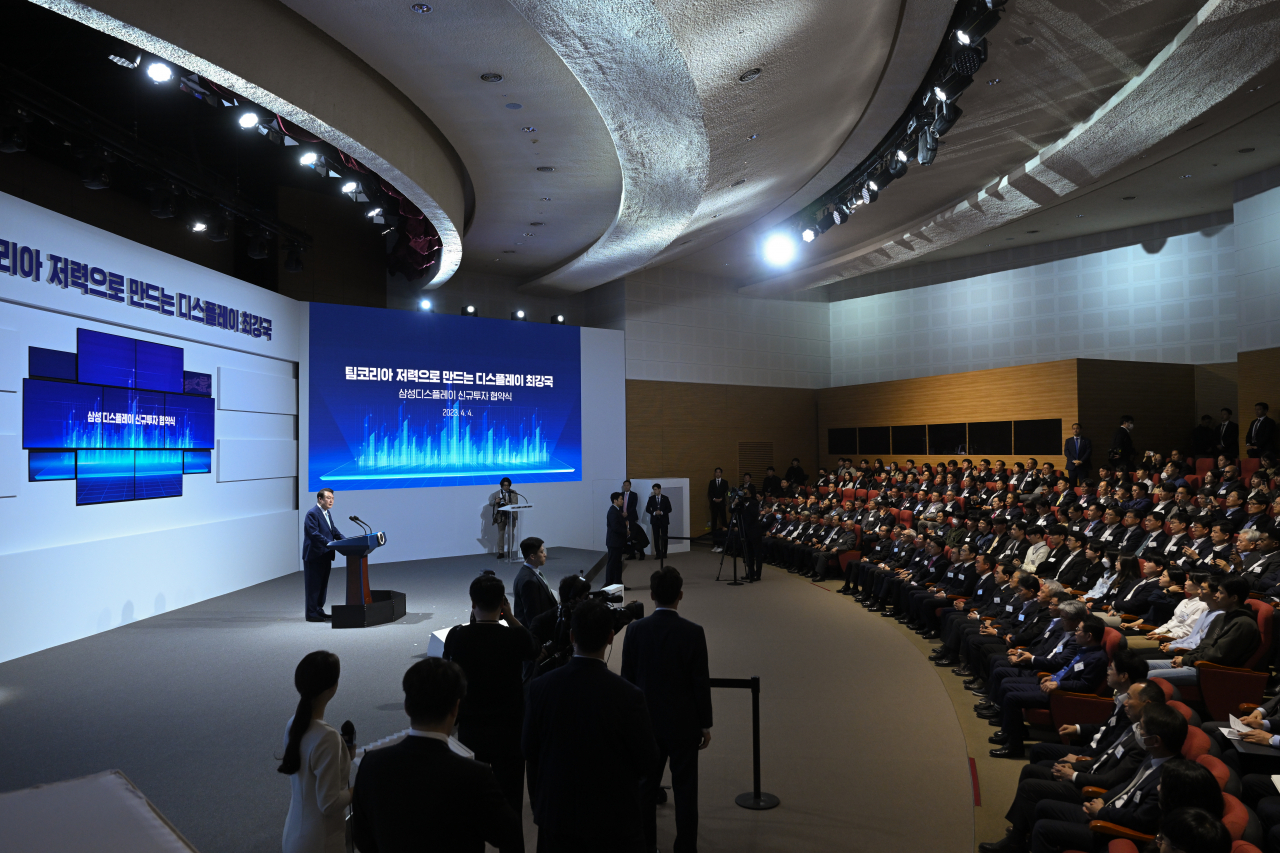 |
President Yoon Suk Yeol speaks at Samsung Display's Asan site in South Chungcheong Province on Tuesday. (Presidential office) |
South Korea will invest 160 trillion won ($121 billion) to secure core technologies in the country’s three major sectors -- semiconductor, display and battery -- through 2027, the Ministry of Science and ICT said Thursday.
“The semiconductor, display and next-generation battery sectors are the supporting technologies that have stably backed up our economy based on the super capabilities of the private sector,” said Science Minister Lee Jong-ho.
According to the government’s plan, the public sector will allocate a 4.5 trillion won investment while the private sector will invest 156 trillion won in research and development for the three areas.
The ministry pointed out that the steps of basic study, application and development and commercialization have been divided into different segments so there was a lack of continuous support for R&D investment.
In order to solve this, the public and private sectors will form a consultative body for each of the three technologies before the end of this year to cover the entire R&D cycle from the beginning to the end. The consultative bodies will consist of government and industry officials, as well as experts from academia.
The government selected 100 core technologies in the fields of chips, display and battery to offer preemptive support, explaining that it is crucial to foresee which technologies will control the global market in a rapidly changing technological environment.
For semiconductors, the ministry picked 45 technologies such as developing new memory chips and advancing fabrication processes. Regarding the display sector, the government marked 28 technologies including ultra-high definition for augmented, virtual and mixed reality as well as 3D and hologram devices. The government chose 27 technologies in next-generation battery such as enhancing the battery’s fire protection and localizing critical materials.
The government will review and revise the list of the core technologies on a yearly basis.
The government said that it plans to utilize the regulations of relevant government bodies -- such as the Ministry of Science and ICT and the Ministry of Trade, Industry and Energy -- for the private sector to quickly execute the investments by offering tax benefits and pushing for R&D and personnel support.
Regarding how to secure trained personnel in these technologies, the government will establish new laboratories at universities and expand existing ones to foster top-notch talent. The government said it will also support setting up new majors designed to guarantee students a position at leading companies in the chip, display and battery sectors.
The government said it plans to install open labs and create infrastructure specifically designed to give researchers a chance to develop technology and test out prototypes.
The ministry will cooperate with global leaders such as the US and the European Union to discover joint projects aimed at solving difficult problems in each technological area and set up networks to secure supply chains.
Chip and display exports accounted for 23 percent of Korea’s total exports in 2021. The global secondary battery market is expected to increase to $351.7 billion in 2030, about eight times larger than that of 2020.
“We will continue to strengthen R&D investment through cooperation between the public and private sectors to secure the world's No. 1 technology in the three major technologies with a winner-take-all structure,” said Lee.







![[Today’s K-pop] Blackpink’s Jennie, Lisa invited to Coachella as solo acts](http://res.heraldm.com/phpwas/restmb_idxmake.php?idx=644&simg=/content/image/2024/11/21/20241121050099_0.jpg)